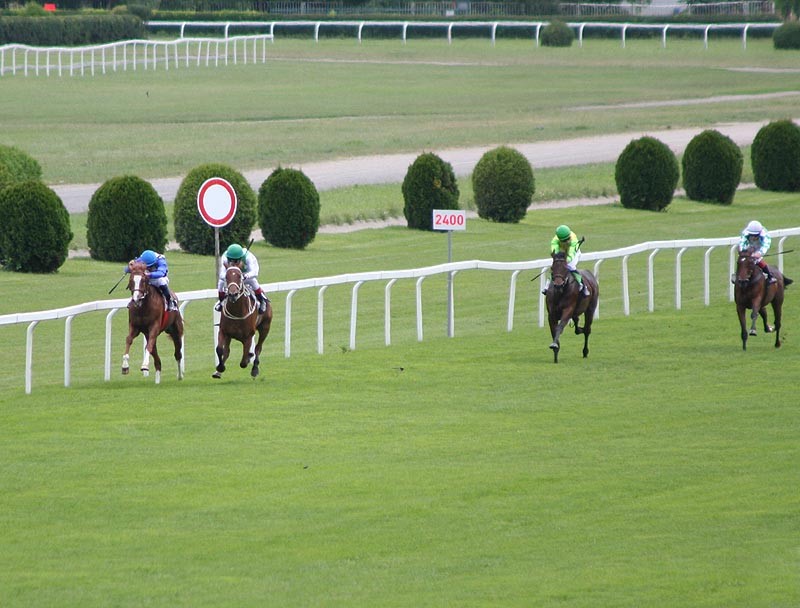Where have all the 2-y-os gone?
This year's Simson Stakes, with only 4 runners
In May and June, the first two months in which races for 2-y-os are organized, we have seen a total of just 25 runners in all races for juveniles this year. If we leave out 2013, when some of the races in June for 2-y-os had to be cancelled due to floods, there is no season since the Changes in 1989 in which there were so few 2-y-o runners in these two months.
Even last year there were 35 juvenile runners, and in 2015 there were as many as 48. From the present-day point of view, the data from 1994 seems almost unbelievable. In the same months, there were 143 runners, almost six times as many as this year.
Number of runners in races for 2-y-os in May and June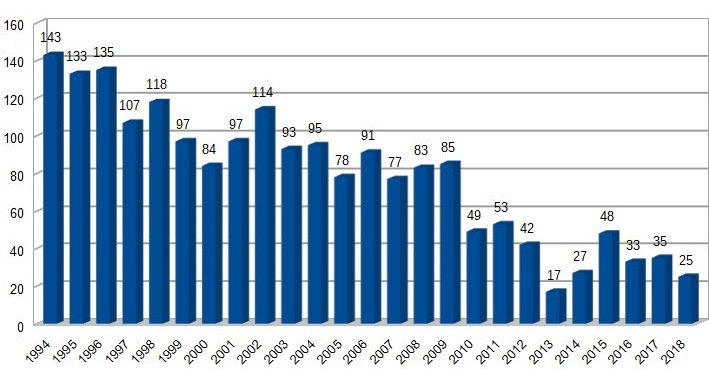
The number of runners depends closely on the opportunities that 2-y-os have to race, that is, the number of races available for them. That number has been dropping considerably. In 1994, there were as many as 21 races for 2-y-os in May and Jume. After that, the number began to drop, but in the first decade of the 21st century the number of races was still in double figures.
Number of races for 2-y-os in May and June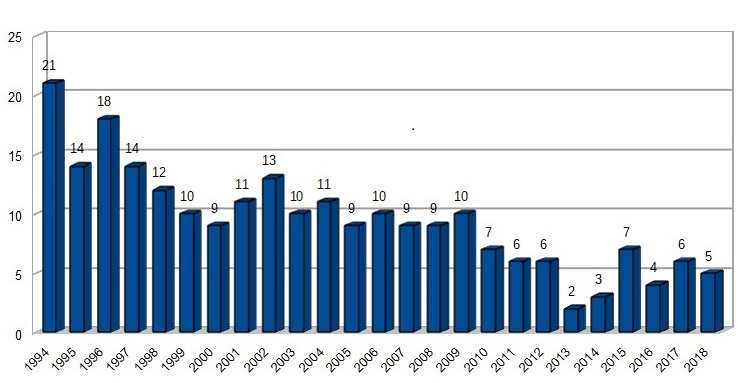
However, the following graph, which shows the average number of runners in races for 2-y-os in May and June, indicates that the slump in the overall numbers of 2-y-os runners in May and June is not due to a lack of opportunities. The number of races for 2-y-os has been declining, but this has been in response to reduced demand for these races, as expressed by the number of runners in each race. The graph shows that the average number of runners in these races was more or less constant for several years, but has been dropping continually in recent years. The exception is 2016, when only four races were organized for 2-y-os. The data shows that there is just no reason to increase the number of races for 2-y-os in May and June – the races have not been well subscribed.
Average number of runners in races for 2-y-os in May and June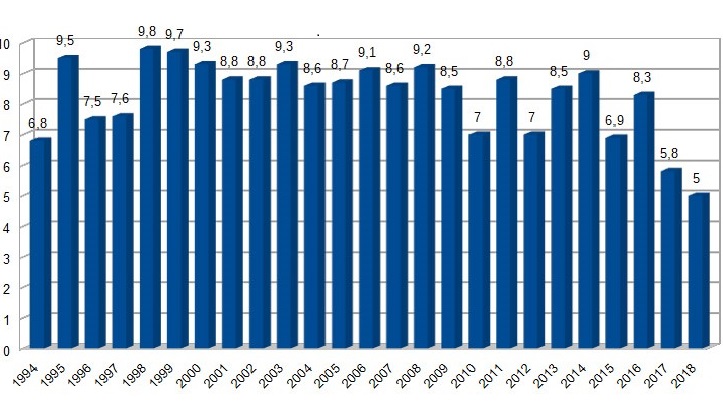
Why, then, have we been registering a regular drop in interest in running 2-y-os before midsummer? Is it because they are making their debut later? We have also looked for the answer to this question in the statistics, and the answer is Yes. However, the trend is not clear. Have a look at the following graph.
2-y-o runners in May and June as a proportion of all 2-y-o runners in the season 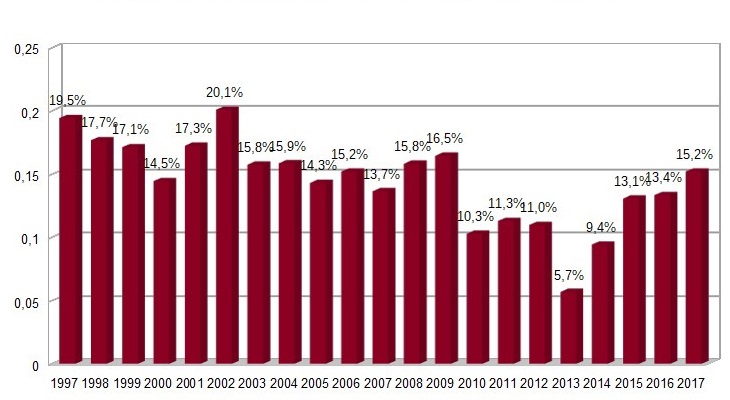
The graph shows the number of runs by 2-y-os in May and June as a proportion of the total number of runs by 2-y-os in the entire season. The graph shows that this proportion has gone down in relation to the period from 1997 to 2009, but that is has changed direction again in the last three seasons. The data for last year is not far removed from the 1997-2009 reference period. Though it should be taken into account that the data for recent years is not as statistically reliable as the earlier data, due to the smaller number of races and runners, it does not seem that there has been any dramatic move in the careers of 2-y-os towards making their racecourse debut later. As in the case of the whole population of racehorses, the proportion of imported horses has been rising. Imported horses tend to be a little more mature than Czech-breds in the early part of their careers, so we might have expected to observe an opposite trend here.
The explanation seems to be simple. The number of 2-y-os has in general been dropping, just as Czech horseracing as a whole has been shrinking: there has been a drop in the number of races, runners, brood mares, and also individual and corporate owners. However, if we go back to the statistics, we can find some figures that diverge from the trend shown here. Unfortunately, they do not go against the trend. On the contrary, they are considerably stronger than the general trend.
If we compare last year with the situation ten years ago (in 2008), we find that the number of runners in flat races here has dropped by “only” 26.3% in that period of time, while the number of 2-y-o runners has dropped by as much as 50%! Yes, by one half. In 2008, a total of 206 2-y-os ran here, as against just 103 last year.
Numbers of 2-y-os running in the Czech Republic

The number of 2-y-os as a proportion of the runners in flat races has thus been dropping continually. At the beginning of this century, 2-y-os formed on an average 22 - 23% of all runners here. Last year, the numbers were just 15.1%. This is definitely not due to the move towards running horses abroad. Though this trend is very marked in Czech horseracing, it concerns 2-y-os least of all. However, there does seem to be an impact from the state of Czech breeding. The number of mares in foal has stabilized in recent years, and has even grown from time to time, but this has not been able to replace even one half of the slump in the number of mares in foal that took place in 2013.
No doubt, the reduction in the numbers of 2-y-os has been affected by the interest of owners in buying ready horses, but I do not have the impression that there have been any major changes in preferences as against previous years. That would have been better news than the conclusion that presents itself, which is that the decreasing number of 2-y-os is an advance indicator of the development of Czech horseracing. In brief, it indicates that there is decreasing interest among owners in bringing in reinforcements. This indicator is gradually appearing in other age categories, too, and is leading to a further decrease in the number of runners. Let us hope that this is not what is really going to happen the Czech horseracing in the future.
Miloslav Vlček
This article by Miloslav Vlček was first published on the Fitmin Turf website. Miloslav Vlček is editor of the Fitmin Turf website https://dostihy.fitmin.cz/. He writes extensively about Czech and international horseracing, and especially about racehorse breeding. Many thanks to him for allowing a translation of this article to appear on our website. Translation by Robin.

